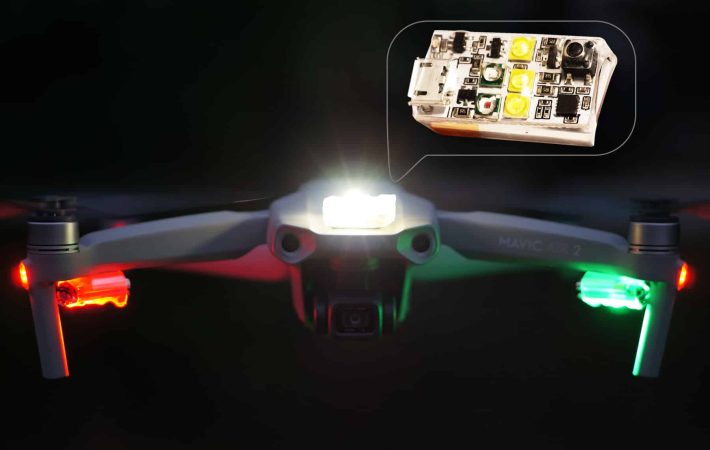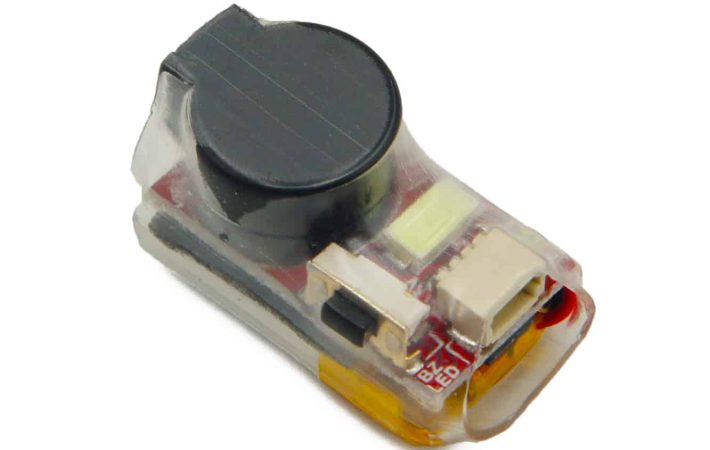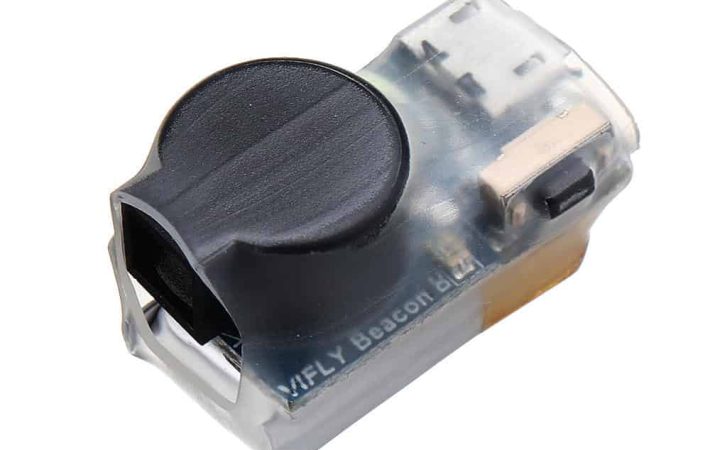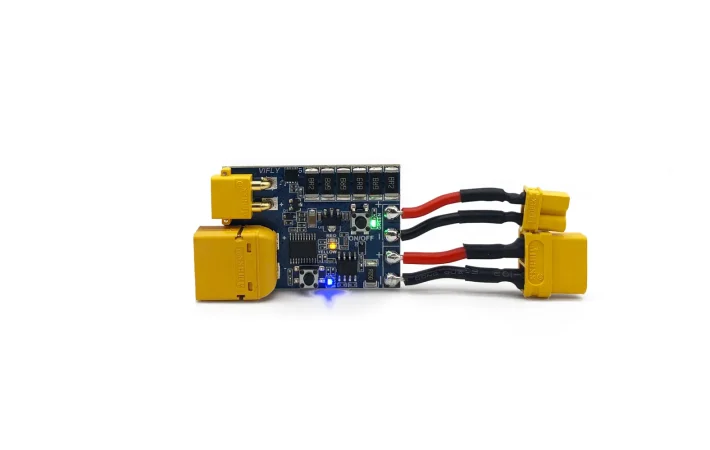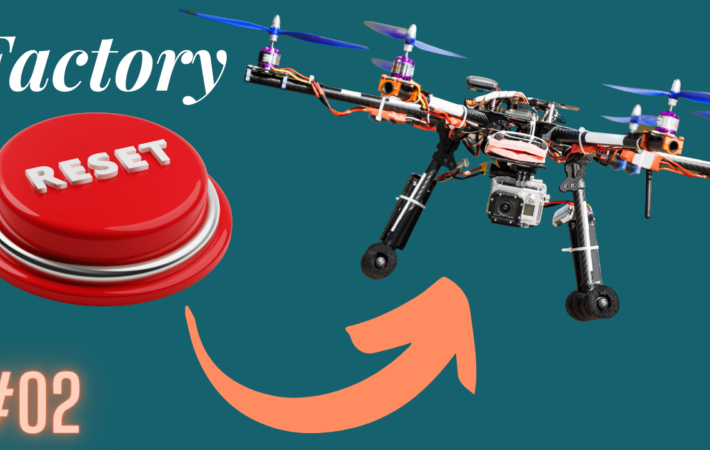Drones, also known as Unmanned Aerial Vehicles (UAVs), have become increasingly popular in recent years for a variety of applications, including photography, videography, delivery, and search and rescue. One of the key elements of drone technology is the frequency at which they operate. In this blog post, we will discuss the different frequencies that drones fly on, and how they are used.
Drones operate on a variety of frequency bands, including 2.4GHz, 5.8GHz, 900 MHz and cellular frequencies. The 2.4GHz and 900MHz frequency bands are used for control and communication between the drone and its radio/transmitter, while the 5.8 GHz frequency band is used for communication between the video transmitter and FPV Goggles. Additionally, cellular frequencies are used for internet connectivity and real-time data transmission. The choice of frequency band depends on the specific application and the environment in which the drone is operating.
The most commonly used frequency for drones is the 2.4GHz frequency band. This frequency band is used for the control and communication between the drone and its remote controller (radio/transmitter). The 2.4GHz frequency band is also used for the communication between the drone and its GPS receiver, which is used for navigation and positioning.
Another frequency used by drones is the 5.8GHz frequency band. This frequency band is used for video transmission from the drone’s video transmitter to the FPV Goggles. The 5.8GHz frequency band is known for its ability to transmit video with minimal latency and minimal interference.
Drones also use the 900 MHz frequency band for communication between the drone’s receiver and its control link or radio. This frequency band is known for its ability to transmit signals over long distances and through obstacles. This makes it ideal for use in environments where the drone may be out of sight of the operator, such as search and rescue operations.
In addition, some drones also use cellular frequencies such as 4G and 5G for communication. This allows them to connect to the internet and transmit data in real-time, making it useful for various applications such as inspection and monitoring, delivery, and surveillance.
Do Drones Use 2.4 Ghz?
The 2.4GHz frequency band is the most commonly used frequency for drones. This frequency band is used for the control and communication between the drone and its remote controller (radio). The 2.4GHz frequency band operates in the ISM (Industrial, Scientific, and Medical) band, which is a globally available frequency band that is also used by other devices such as Wi-Fi routers, Bluetooth devices, and microwave ovens.
The 2.4GHz frequency band offers several advantages for drones. It has a long range, which allows the operator to control the drone from a greater distance. It also has a high penetration rate, which allows the signals to pass through obstacles such as buildings and trees. This makes it ideal for use in urban environments where the drone may be out of sight of the operator.
In addition to control and communication, the 2.4GHz frequency band is also used for the communication between the drone and its GPS receiver, which is used for navigation and positioning. The 2.4GHz frequency band is known for its ability to transmit signals with minimal latency, which is crucial for real-time navigation and control of the drone.
It is also important to note that 2.4GHz frequency band is prone to interference from other devices that operate on the same frequency band, such as Wi-Fi routers and Bluetooth devices. To minimize interference, it is important to choose a high-quality remote controller and ensure that the drone is operated in a location with minimal interference.
Is 2.4 GHz or 5 GHz Better For Drones?
In general, 2.4 GHz is the best and most common frequency band for controlling the movement of the drone, but the 5 GHz (5.8GHz) frequency band is best for video transmission from the drone’s video transmitter to the FPV Goggles. You will end up using both 2.4 GHz and 5.8GHz. The choice ultimately will be between 2.4 GHz and 900MHz.
One of the main advantages of the 2.4GHz frequency band is its long range. This allows the operator to control the drone from a greater distance. It also has a high penetration rate, which allows the signals to pass through obstacles such as buildings and trees. This makes it ideal for use in urban environments where the drone may be out of sight of the operator.
On the other hand, the 5GHz frequency band is also used for control and communication between the drone and its remote controller. This frequency band is also used for video transmission from the drone’s camera to the remote controller. The 5GHz frequency band is known for its ability to transmit video with minimal latency and minimal interference.
One of the main advantages of the 5GHz frequency band is that it is less crowded than the 2.4GHz frequency band, and therefore it is less prone to interference. Additionally, it has a shorter wavelength which allows for a faster data transfer rate, that is why it is often preferred for video transmission.
In conclusion, both the 2.4GHz and 5GHz frequency bands have their own advantages and disadvantages. The 2.4GHz frequency band offers a long range and high penetration rate, making it ideal for use in urban environments. However, it is prone to interference from other devices that operate on the same frequency band. On the other hand, the 5GHz frequency band is less crowded and is preferred for video transmission, but its range is typically shorter. The choice between the two frequency bands will depend on the specific application and the environment in which the drone is operating.
How Far Can A 2.4 GHz Drone Fly?
Drones that operate on the 2.4GHz frequency band have a maximum range of about 1-2 miles (1.6-3.2 kilometers) under ideal conditions. However, the actual range of a drone can vary depending on several factors such as the weather conditions, the terrain, and the presence of obstacles. Additionally, the range of a drone can be affected by the quality of the remote controller, the drone’s antenna design, and the power output of the transmitter.
To increase the range of a drone, several techniques can be used. One technique is to use a directional (patch) antenna on the drone and the remote controller. This can help to focus the signal in a particular direction, which can increase the range of the drone. Another technique is to use a higher power transmitter on the drone. This can increase the signal strength, which can help to increase the range of the drone.
It is also important to note that the range of a drone is affected by the laws and regulations of the country or region where it is being operated. For example, in the United States, the Federal Aviation Administration (FAA) has a maximum limit of 400 feet (122 meters) for drone flights. This means that the range of a drone is limited by the laws and regulations of the country or region where it is being operated.
What is GHz In Drones?
When it comes to drones, one of the most important technical aspects to consider is the frequency band that the drone operates on. The frequency band refers to the range of frequencies that the drone uses for control and communication. One of the most commonly used frequency bands for drones is GHz (gigahertz).
GHz stands for Gigahertz, which is a unit of frequency. It is equal to one billion hertz (Hz). The frequency band that a drone operates on is measured in GHz. The most commonly used frequency bands for drones are 2.4GHz and 5.8GHz.

